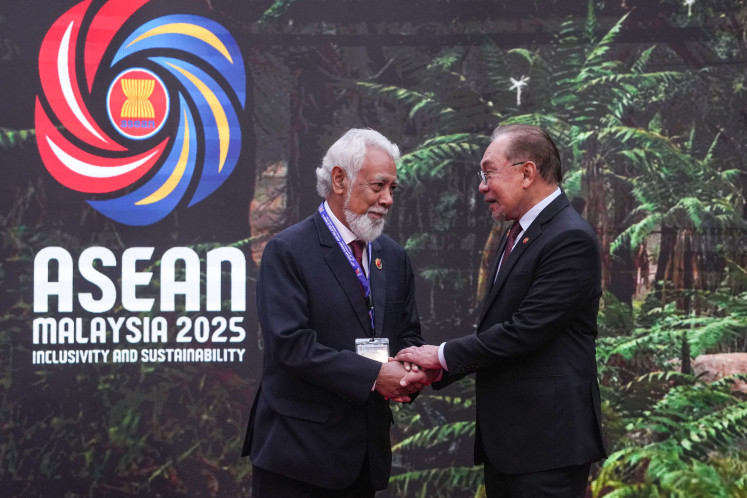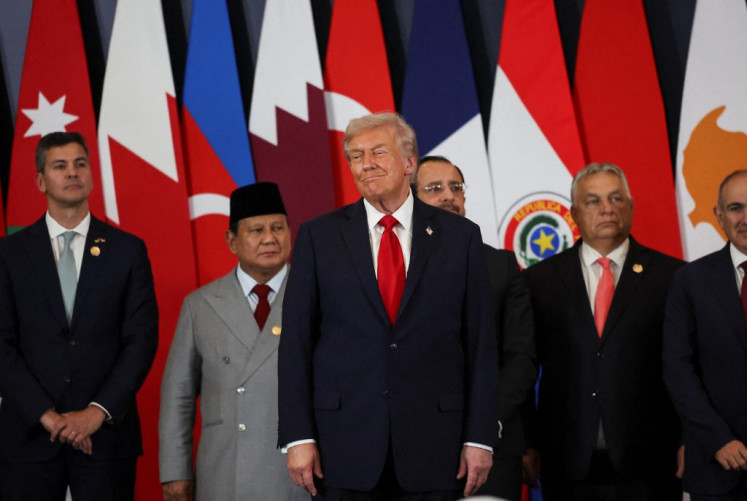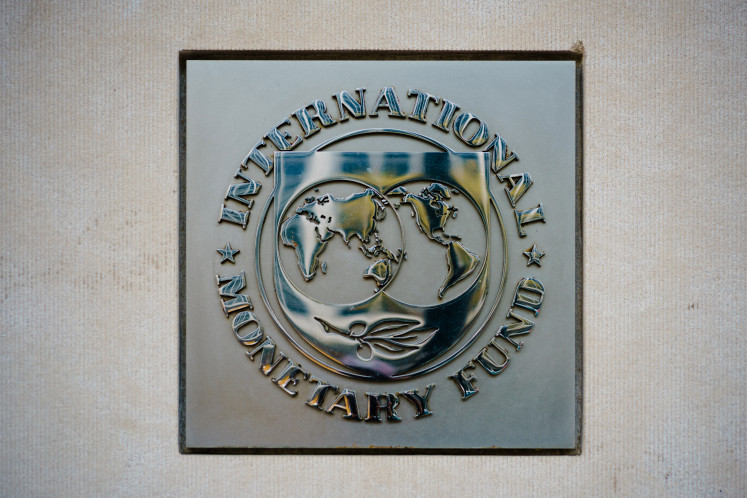Popular Reads
Top Results
Can't find what you're looking for?
View all search resultsPopular Reads
Top Results
Can't find what you're looking for?
View all search resultsFaith and corruption: Why morality starts in early childhood
One way to tackle the country's endemic corruption is investing in early childhood, when fairness and empathy are wired in the brain.
Change text size
Gift Premium Articles
to Anyone
W
hen Indonesians hear of yet another corruption case tied to the Religious Affairs Ministry, the public sighs. How can the “moral ministry” itself be tainted by ethical collapse?
There are many possible explanations. Some scholars turn to leadership theory, such as the “moral surplus framework” of Nitin Nohria, who argued that institutions carry a kind of moral capital, a reservoir of credibility earned by aligning words with deeds. Once that surplus is depleted by repeated failure, an institution’s moral voice loses authority and becomes difficult to restore.
Others point to cultural norms: In shame-based societies, what matters is often whether misconduct is seen rather than whether it is wrong. Still others emphasize institutional incentives: When public approval is tied more to outward piety than to inner integrity, the system rewards visible religiosity even as it neglects ethical backbone.
Each of these explanations adds value. But if we remain open-minded, neuroscience can help clarify why religion and morality, though both necessary, do not operate from the same part of the brain.
Modern brain science shows that faith and moral judgment are rooted in different neural circuits. Religious experience, such awe in prayer, the comfort of ritual, the sense of belonging in a congregation, is processed in the limbic system and temporal-parietal regions, the areas responsible for emotional salience and meaning-making (Moll et al., 2005; Kapogiannis et al., 2009).
These areas remain plastic and responsive across life, which is why a professor, a politician or a street vendor can become more visibly religious at any age. Neuroscience even affirms what believers already know, that piety is healthy. Rituals reduce anxiety, strengthen resilience and nourish hope in the afterlife.
Moral decision-making, however, rests on a different system. Empathy, fairness and impulse control are governed by the prefrontal cortex, anterior cingulate cortex and temporoparietal junction (Greene & Haidt, 2002; Decety & Cowell, 2018). These circuits are laid down in childhood, sharpened during adolescence and then stabilized in early adulthood.
Between ages 3 and 7, children form the foundational pathways of fairness and empathy. During adolescence, synaptic pruning trims away weaker connections, leaving the strongest to survive (Giedd, 2004). From ages 17 to 24, myelination insulates those surviving circuits, making them fast, efficient and difficult to change (Fields, 2008).
In plain terms, morality is wired early, and then locked in. A recent Scopus publication estimates that 45 percent of adult moral capacity is set by age 7.
Religious traditions have long recognized this developmental truth. In Judaism, children are trained in mitzvah from around age 7, culminating in the bar or bat mitzvah at ages 12-13, when legal and moral responsibility is formally conferred. In Islam, there is no single fixed age, but moral accountability is tied to awareness (tamyiz) and biological maturity (balig).
In both traditions, childhood and early adolescence are treated as decisive windows for shaping conscience. Neuroscience, in this sense, provides biological support for what faith communities have intuited for centuries: Morality cannot be postponed to adulthood. Childhood lays the foundation, and later forces tilt how it is expressed.
The other half of moral behavior is continuously shaped by additional influences: cognitive biases and distortions (22 percent), which push people toward shortcuts like moral licensing or identity-driven reasoning; external pressures (18 percent) such as authority, reward systems or peer approval, which can override internal conviction; contextual environments (10 percent) including cultural norms and institutional climates, which tilt what is tolerated; and character (5 percent), which, though smaller in weight, still colors how individuals act under stress.
Together, these factors explain why even adults with strong religious practice may stumble morally. Their neural foundation may be solid or weak, but biases, pressures and contexts can still tilt decisions away from ethical reflex. These later forces do not erase the childhood foundation but bend it. Biases distort, pressures override and contexts tilt how the early 45 percent expresses itself in real life.
This distinction explains the paradox. A person can be sincerely religious yet still falter morally if early childhood failed to consolidate the circuits of fairness and empathy. Religious rituals may deepen meaning, but they do not rewire the prefrontal cortex once pruning and myelination are complete.
This is why Indonesia, though visibly devout, still struggles with corruption. Sacred piety and moral reflexes are not on the same neural pathway. Public approval, bureaucratic rewards and patronage politics only deepen this gap.
Ritual is prized for its visibility, but when corruption tests character, the prefrontal system may not hold if it was never stabilized in childhood. The result is what we see all too often: sacred piety on the surface and moral failure in practice.
In such moments, the common response is to say, “Those officials were not upholding real religious values.” But that is a bizarre claim. “Real” religiosity is not measurable. It cannot be quantified, let alone triangulated across faiths, cultures and contexts.
To insist that corruption proves someone is not religious is to miss the point entirely. The issue is not whether their ritual was authentic, but whether their moral circuits were ever consolidated in the first place.
This is not an attack on faith. On the contrary, religion and morality are both essential. Faith provides belonging, identity and transcendence. Morality provides fairness, empathy and accountability. But faith and morality are not causally identical. Believing that multiplying ritual will automatically produce more ethics is both theologically shallow and scientifically false.
For Indonesia, the implication is clear. If we want leaders who are both pious and moral, the solution is not louder slogans or more ritual for adults. It is investment in early childhood, when the circuits of empathy and fairness are still forming. Strengthening early education, family modeling and community practices that reward truth and compassion will do more to prevent corruption than any number of adult sermons.
The irony of a “moral ministry” undone by corruption will persist until we acknowledge what both leadership theory and neuroscience confirm. Nohria’s “moral surplus” framework is a caution: Institutions may enjoy moral credibility for a time, but once that surplus is drained by hypocrisy, it cannot be restored by either ritual or rhetoric.
At the individual level, neuroscience shows the same pattern: If moral circuits are not consolidated in childhood, no amount of adult religiosity can make up for it.
While sacred piety and moral conduct are both vital, they activate different areas of the brain: One cannot substitute for the other. Recognizing this neurological distinction is crucial for safeguarding the nation’s moral future.
***
Toronata Tambun is a Harvard Business School alumnus and lead author of “Neural Development in Early Childhood and the Emergence of Moral Cognition” (International Journal of Early Childhood, September 2025). Nur Munir is a Harvard Divinity School alumnus.

















